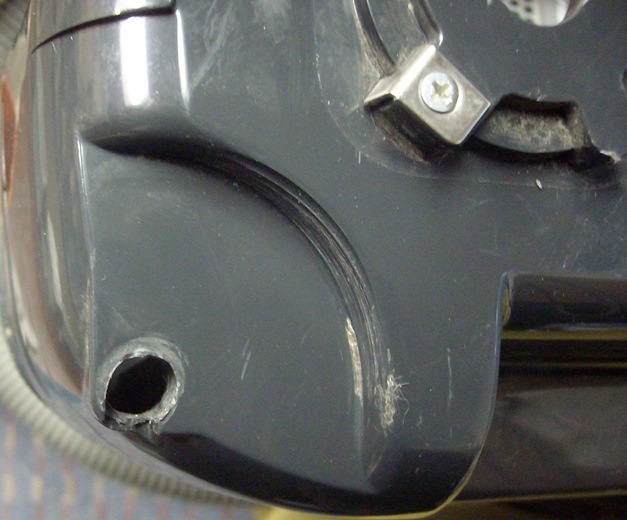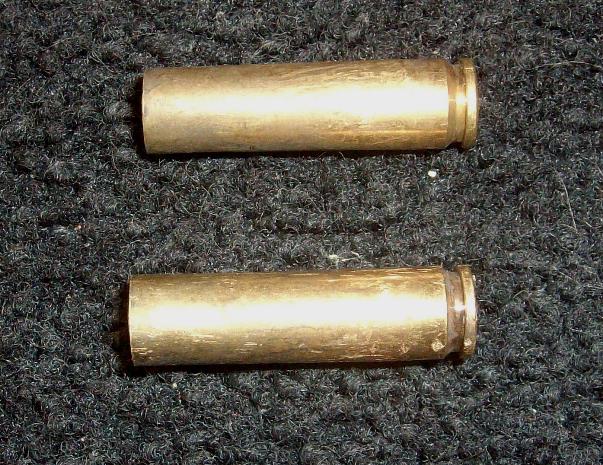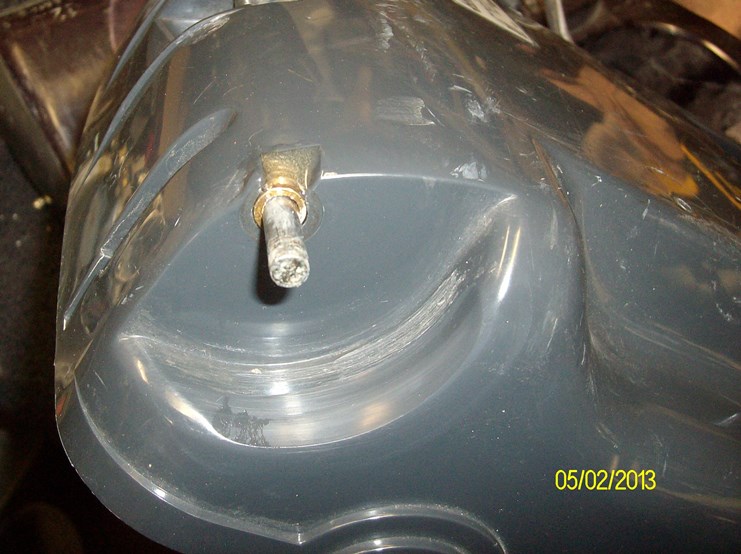|
Thread Number: 20632
Repairing over-sized axle holes in Kenmore uprights |
[Down to Last] |  |
| Post# 231017 , Reply# 1 5/3/2013 at 00:22 (4,008 days old) by gmerkt (Edmonds WA) | ||
|
This is what a broken axle hole looks like. Actually, this one isn't too bad. Note the scraping marks in the wheel well on the case from a dragging wheel. 
| ||
| Post# 231018 , Reply# 2 5/3/2013 at 00:24 (4,008 days old) by gmerkt (Edmonds WA) | ||
|
These are .30 US Carbine cartridge cases viewed from the side. They have a straight wall slightly larger than the axle diameter of .25. 
| ||
| Post# 231020 , Reply# 4 5/3/2013 at 00:31 (4,008 days old) by gmerkt (Edmonds WA) | ||
|
Okay, here is the first "bushing" (drilled cartridge case) set in place with the first course of epoxy. Note the axle in place to hold the bushing in alignment while the epoxy cures. 
| ||
| Post# 231021 , Reply# 5 5/3/2013 at 00:33 (4,008 days old) by gmerkt (Edmonds WA) | ||
|
This picture shows the inside cavity that the bushing protrudes into. It has the first course of epoxy holding it in place. Note the scuffing from the Dremel tool for the benefit of the follow-on flooding of bulk epoxy. 
| ||
| Post# 231030 , Reply# 8 5/3/2013 at 05:46 (4,008 days old) by Blackheart (North Dakota) | ||
I've heard about this | ||
| Post# 231108 , Reply# 10 5/3/2013 at 22:09 (4,007 days old) by dustin (Jackson, MI) | ||
Hmmmm....
I wonder if my Kenmore Progressive (lower end, blue, belt drive) has this problem. It still rolls, and has the rubber tire on both wheels, but doesnt roll very well. I thought my issue was with the front wheels, but maybe not? I oiled and greased the wheels several times, but never even thought to look at the plastic housing. The vacuum is up at our other house, but I will check it out the next time I go up there...
| ||

 Comes to the Rescue!
Comes to the Rescue!